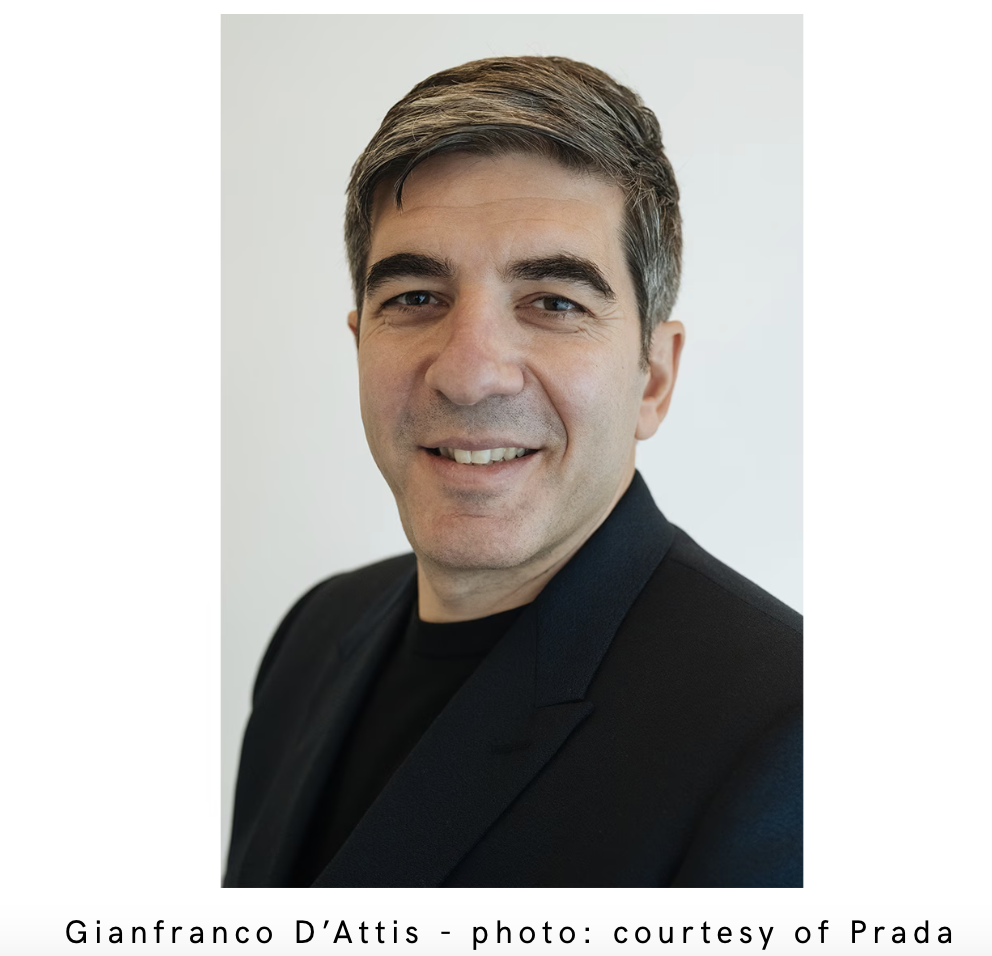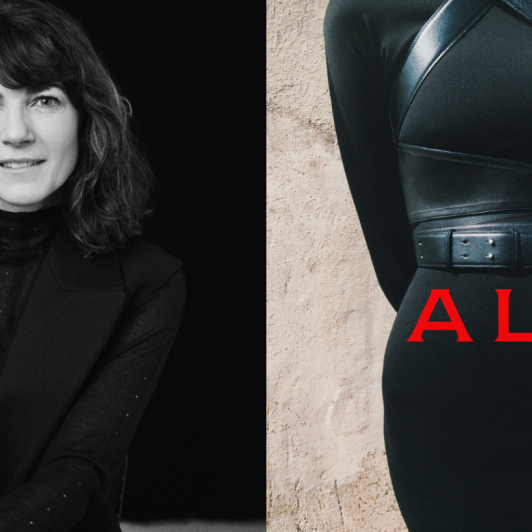On January 2nd, Gianfranco D’Attis, who possesses extensive management experience in the luxury retail sector, assumed the role of CEO at Prada. Notably, this position was created for the first time; previously, the renowned Italian luxury brand had been jointly led by Prada Group CEO Patrizio Bertelli and his wife, Miuccia Prada.
In early December, D’Attis arrived in Shanghai, China, for a face-to-face interaction with the media at the global premiere of the “Pradasphere II” exhibition.

The Three Pillars of Prada’s Brand Strategy
“I grew up in Switzerland and remember being excited to save up for a pair of Prada shoes when I was 14. Thirty years later, I became the CEO of Prada, which is an incredibly cool destiny,” D’Attis vividly explained the longstanding emotional connection between luxury brands and consumers, drawing from his own experience.
He stated that in the highly competitive luxury goods industry, consumers have increasingly high expectations for brands. They are clear about their inner needs and anticipate more from the brands. Therefore, Prada continually tries to interact and communicate with consumers in novel ways, emphasizing the importance of building brand loyalty.
Consumers expect not just products and services, but also want to understand more about the brand’s initiatives in protecting the earth’s environment, valuing and nurturing talent, and cultural heritage. These aspects form the three main factors in Prada’s sustainable development strategy.
D’Attis succinctly and clearly outlined the three main pillars of Prada’s brand strategy:
Firstly, enriching the brand’s assets through investment and innovation.
Founded in 1913 by Mario Prada in Milan, the brand has always adhered to exceptional craftsmanship and innovative spirit, a DNA that continues to this day. More than 100 years later, the brand’s inheritors, Miuccia Prada and Creative Director Raf Simon, have engaged in many dialogues and co-creations, resulting in a magical chemistry.
Secondly, investing in and constructing a comprehensive “Made in Italy” supply chain.
The “Made in Italy” supply chain is highly competitive in the luxury goods industry. The brand needs to ensure strict control over every aspect, including raw material procurement, distribution, and design. The entrepreneurial spirit of Italy has always been part of Prada’s DNA, with 21 of its 24 production sites located in Italy.
Lastly, remaining cultural relevance and redefining luxury brands.
This is most important. To quote Miuccia Prada: “The underlying logic of Prada is that we must make culture and art more attractive. If we cannot output attractive culture and art, no one will be willing to listen to us.” The exhibition in Shanghai is an attempt to show that Prada is a real brand, not just an abstract brand and lifestyle.
The “Pradasphere II” exhibition acts like a window to the world, presenting Prada’s perspectives on art, culture, music, architecture, and more. “If I were to summarize Prada in three words, it would be critical, adventurous, and conflicting, while also being humble, introspective, and authentic. This distinctiveness sets us apart.”
Prada’s Plans in the China Market
Gianfranco D’Attis stated that China holds a very important strategic position in Prada’s global market. While specific data on China’s market performance wasn’t disclosed, he maintains an optimistic outlook overall. In the medium to long term, Prada plans to increase investments in marketing, communication, and distribution networks in China.
He expressed a strong desire to understand consumers, mentioning his visits to China every two months. He observed the rapid evolution of the luxury goods market in China, providing Prada with great opportunities to better understand consumers, introduce products specific to the local market, enhance the in-store experience, and maintain better communication with them.
Responding to Luxe.CO about Prada’s development goals and implementation strategies in China, D’Attis revealed:
Prada aims to double the scale of its business in China in the medium to long term. This will involve expanding existing stores and opening new ones, integrating more contemporary luxury concepts.
Recently, Prada introduced two new categories – high-end jewelry and home goods – necessitating larger store spaces to showcase a more comprehensive product line. Future plans also include introducing the concept of cafés. While specifics of time and location were not disclosed, it’s confirmed that Caffè Prada will open in China within two years.
When the world’s first Caffè Prada opened in London, consumers experienced authentic Italian coffee and lasagna. The upcoming Caffè Prada in China will also offer high-quality dining and services, presenting an immersive Prada experience.

About the Pradasphere II Exhibition
The global premiere of the Italian luxury brand Prada’s Pradasphere II exhibition opened on December 7 at the Shanghai Star Art Museum and is free to the public until January 21, 2024.
This exhibition follows the successful debut of Pradasphere at London’s luxury department store Harrods in 2014.
Co-curated by Prada’s joint creative directors Miuccia Prada and Raf Simons, the exhibition presents over 400 physical and digital artifacts, Prada’s fashion archives, and cross-industry collaborations in art, architecture, culture, and sports. It narratively showcases Prada’s 110-year history since its establishment in 1913.

| Image Credit: Photos by Luxeplace.com, Prada Group official website
| Editor: LeZhi




